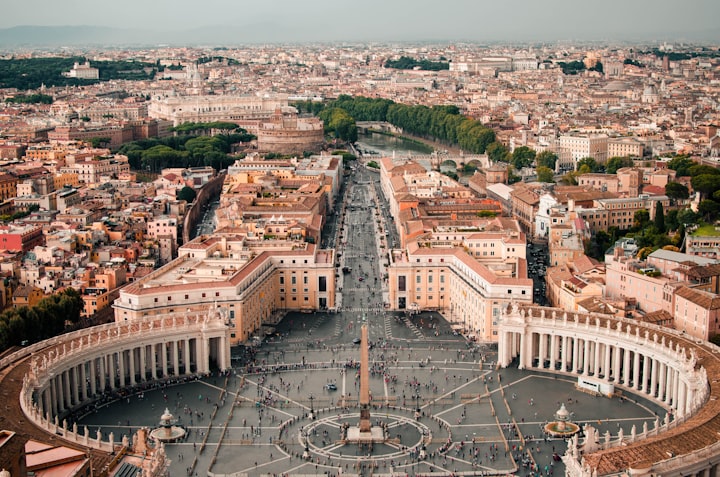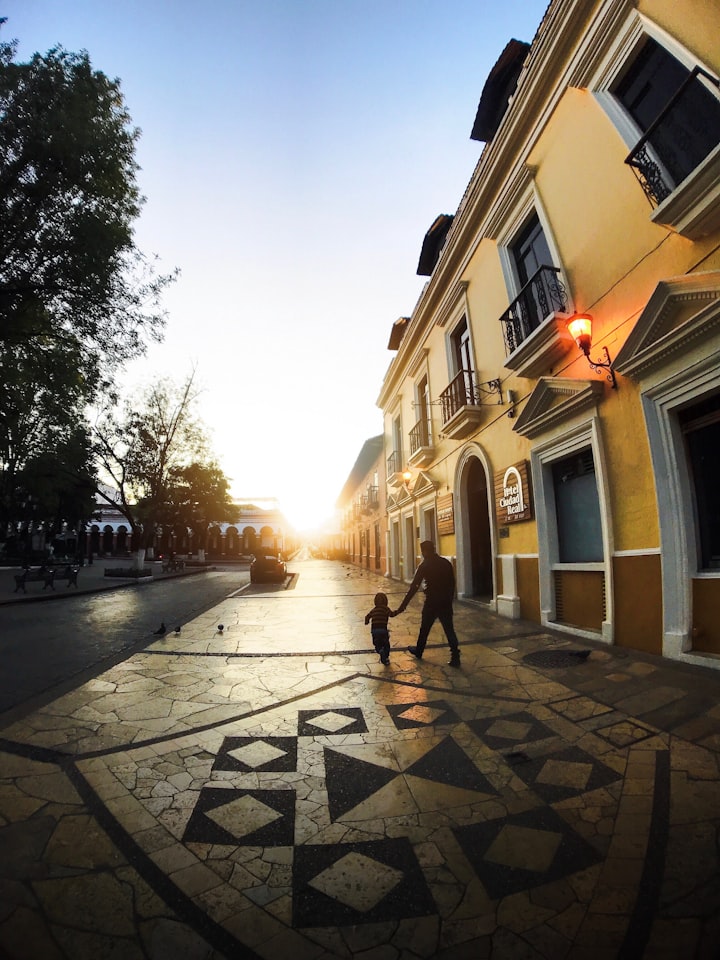
Welcome guys let's take a look at the worldwide map and you will be able to easily identify a large number of countries like the United States, Russia, Canada, Greenland, and Australia. What you can't see without straining your eyes or zooming in on 10x the world's smallest countries. With this installment, we take our magnifying glass and seek out the top 10 countries in the world. a
10. Malta
The world's largest island, Malta's Mediterranean archipelago reaches only 122 square miles [122 sq km] or approximately 316 square miles [316 sq km]. Throughout its long history, the Malayahas was inhabited by Stone Age farmers and hunters from Sicily, Phoenicians, Carthaginians, Romans, Moors, Normans, Sicilians, Spanish, French, and, finally, the British before independence in 1964. During World War II, Malta's proximity to the ports of Sicily and the Axis made it ideal for launching a British invasion of the Italian Navy. After the war ended, Maltese Prime Minister George Borg Olivier entered into negotiations with the United Kingdom for independence. On May 1, 2004, 14 years after the first application by Foreign Minister Guido de Marco, Malta was recognized by the European Union.
9. The Maldives
Located in the Indian Ocean, the independent Maldives nation has 1,192 different islands. Its history goes back to about the 3BC century. The spread of Buddhism helped to create a culture of tolerance for this 115-square-mile [115 sq km] or 298-square-foot island. Although they started under Buddhist rule, the Maldives fell under a series of various powers including the Portuguese in the 16th century, the Dutch in the 17th century, and finally surprisingly the British in the 19th century. On July 26, 1965, the Maldives gained independence from the United Kingdom, although British airbase remained operating on the island of Gan for another 12 years. In 2008, the nation introduced a new constitution that led to the election of President Mohamed Nasheed, who was sentenced to 13 years in prison for arresting Criminal Court Judge Abdulla Mohamed.
Saint Kitts and NevisOn
On September 19, 1983, the West Indies state of Saint Kitts and Nevis, known as the Federation of Saint Christopher and Nevis, gained independence from the United Kingdom, transforming it into a two-island state with an area of 101 square miles [101 sq km] of approximately 261 square miles. Originally settled by the Native Americans known as the Kalinago, the islands became a European interest when they were discovered by Christopher Columbus in 1493. The first settlement was established in 1538 by the French Huguenots, although the Spaniards quickly destroyed it, making it the English assassins in 1623. of the wars that followed when the Spaniards sought to reclaim the land from England and France and all three aimed to drive out Kalinago completely. Eventually, Spain's power diminished and the French finally weakened after the war with the British. Kitts.
7. Marshall Islands
Due to Global Warming, the future of the Marshall Islands does not look very good as asset levels continue to rise. By 2050, it is estimated that 17% of the world could find itself underwater, and while that may not sound like a high number, it is estimated that only a small country covers an area of 70 square miles or about 181 square miles. Located near the equator in the Pacific Ocean, about 53,000 people call the home of the Marshall Islands. After being settled by the colonists of Micronesia in the second millennium BC, the islands saw many visits by Spanish and English explorers. In 1874, the islands came under Spanish rule and were sold to the German Empire in 1884. After the Japanese were captured in World War I and claimed by the United States in World War II, the Marshall Islands gained full sovereignty in 1986 under the Compact of Free State and the United States.
6. Liechtenstein
Not only is it fun to say, but Liechtenstein is also the smallest European animal, created between Austria and Switzerland. The nation measures 62 square miles or 160 square kilometers and is home to about 37,000 people. The small independent state gained its independence in 1806 when Napoleon Bonaparte included it in the Confederation of the Rhine, or group of clients of the First Kingdom of France, and the Pressburg Treaty. While the national language is German, it is the German language that is closest to what can be heard in Switzerland and Austria. Since the mid-1970s, when Liechtenstein began to transform its economy after the Cold War, it was considered one of the safest countries in the world.
5. San Marino
San Marino is a curious piece of Italy. On any map, it looks like a huge city on the northeast corner of the peninsula, but it is actually a ruling country of 24 square miles [24 sq km] or about 60 square miles [61 sq km]. Long before the Italian occupation, SantaMarinus was forced out of the city of Rimini, where he lived as a stonecutter after Diocletianic persecution. He fled to Monte Titano where he built a small church and, on September 3, 301, founded the city of San Marino. Although its independence was not officially recognized by the Pope until 1631, San Marino became known as the oldest province in the world. Although surrounded by Italian territory, the country never fell under Italian rule. In fact, San Marino served as a refugee during the unity of 19th-century Italy and even drew a hostile eye as an Austrian follower after remaining neutral during World War I.
4. Tuvalu
Currently, the small country of the Polynesian island of Tuvalu has a place on this list that covers 10 square feet [10 sq m] or 26 square miles [26 sq km], but with an elevation of 15 feet [15 m] or about 4 feet [4.6 m] above sea level, global warming could change that. The history of a small nation dates back to prehistoric times, some 3,000 years ago during the Pacific migration. In the 19th century, Tuvalu came under British rule where it remained until October 1, 1978, when it became an independent nation within the Commonwealth. Tuvalu consists of six atolls and three archipelagoes and is nationally similar to nearly 96% of the nearly 11,000 Polynesian people.
3. Nauru
At a distance of about 8 square miles [8 sq km] or about 21 square miles [21 sq km], the Republic of Nauru, formerly known as Pleasant Island, plays an estimated ten thousand people. The neighboring island of Barnabas in the South Pacific, Nauru was under German occupation until World War I, when it was annexed to the United Nations by Australia, New Zealand, and the United Kingdom. During World War II, the Japanese settled on a small island and did not until 1968, long after the end of the war, when Nauru gained independence. With only a handful of fertile land and limited resources to provide trade, the country's largest source of funding comes from Australia in exchange for some of its lands as refugee camps. It is alleged that the institutions were notorious for their poor conditions, overcrowding, and human rights abuses.
2. Monaco
Following the signing of the Franco-Monegasque Treaty of 1861, the French microstate of Monaco was officially recognized as a separate, distinct country from France. Taking a small boring area off the coast of France, Monaco occupies only 499 hectares, or 1 square mile or about 2.6 square kilometers. To oversee the under-40,000 population only the constitutional monarchy led by the Emperor of Monaco was preceded by a Minister of State serving as the executive branch and Government Council. Although separated from France and has its own limited military power, the protection of the independent state is defined in the treaty with French responsibility. In 1993, Monaco was admitted to UnitedNations as a voting member.
1. Victoria City
In the western part of Rome, Italy, is a walled area, a unique country known as the State of Vatican City. At .17 square kilometers or about 444 square kilometers and sports with an estimated population of 450 people, Victoria City holds the record for being the smallest country in the world. Acting independently outside Italy, the Vatican The city is the perfect monarchy over the Pope. Every five years, the Pope appoints a series of cardinals to serve as a law known as the Pontifical Commission for Vatican City State. On February 11, 1929, the Vatican was divided from Italy into an independent state, abolished the papacy, and the end of a long feud between the church and the state.





Comments
There are no comments for this story
Be the first to respond and start the conversation.